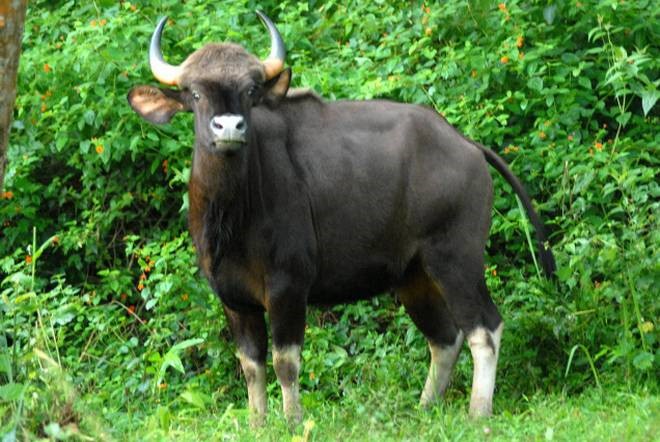Why in news?
A male Gaur, also known as Indian Bison, aged between three to four years, was spotted in the residential area of Mahatma Society in Kothrud area of Pune was rescued after three-hour long efforts by forest department officials, which later died of suspected exhaustion.
- The Indian Bison, mainly found in South and Southeast Asia.
- The gaur is the largest wild bovid alive today. It is listed in Schedule 1 of the Indian Wildlife (Protection) Act, 1972.
- It has been listed as ‘vulnerable’ since 1986 on the Red List of the International Union for Conservation of Nature.
- In India, the Gaur is mainly found in Western Ghats, the forests of central India and forest patches in the the Northeast. In Maharashtra, a Gaur is found mainly in Sahyadri ranges and also in forest areas adjoining Madhya Pradesh.
- Gaurs are by nature shy and avoid confrontation, unless provoked.
- Cases of human casualties have been reported but are rare. But cases of crop damage by the Gaurs are common and often reported from places adjoining forest areas where Gaurs are present.
- There is a mechanism to give compensation to farmers after crop damage by wild animals like elephants, chital, sambar deer or blackbuck, and a similar mechanism exists for crop damage by Gaurs.

Standard Operating Procedure for Human-Gaur conflicts
- After increasing number of cases of human-Gaur conflicts in the Western Ghats, the office of Principal Chief Conservator of Forests of Maharashtra came up with a Standard Operating Procedure (SOP) in 2015 for handling these situations, following deliberations of a committee formed for this purpose.
- The SOP document enlists various reasons for human-Gaur conflicts, and also actions to be taken in these situations by various stakeholders including local residents, civic bodies and joint forest management committees, before Forest department officials and police reach the spot.
- The SOP document has very clear instructions on crowd control, precautions to be taken by media personnel and ensuring that social media messages do not lead to panic.
- The SOP also has step-by-step instructions on tranquilising, loading and transport of the heavy animal, which can weigh between 600 to 1000 kgs.
- One entire section of the SOP document is dedicated to steps to avoid any human casualties in man-animal conflict situations.



1.png)
